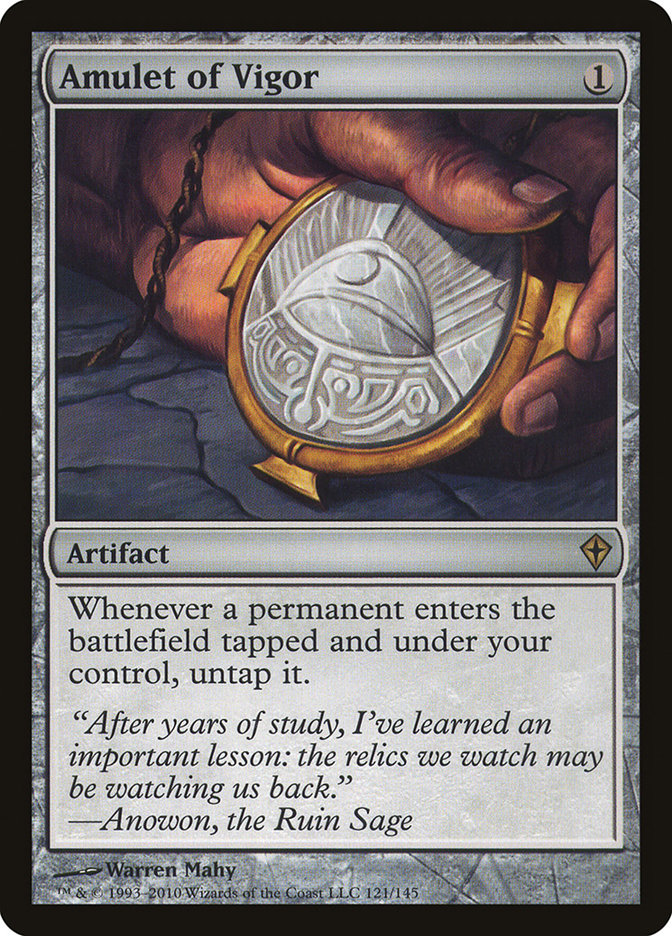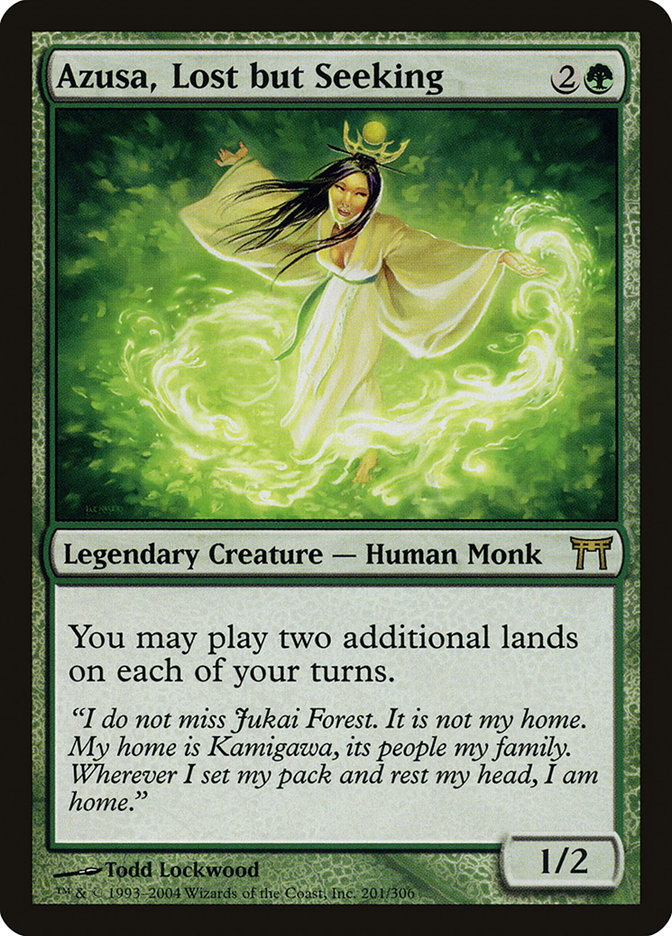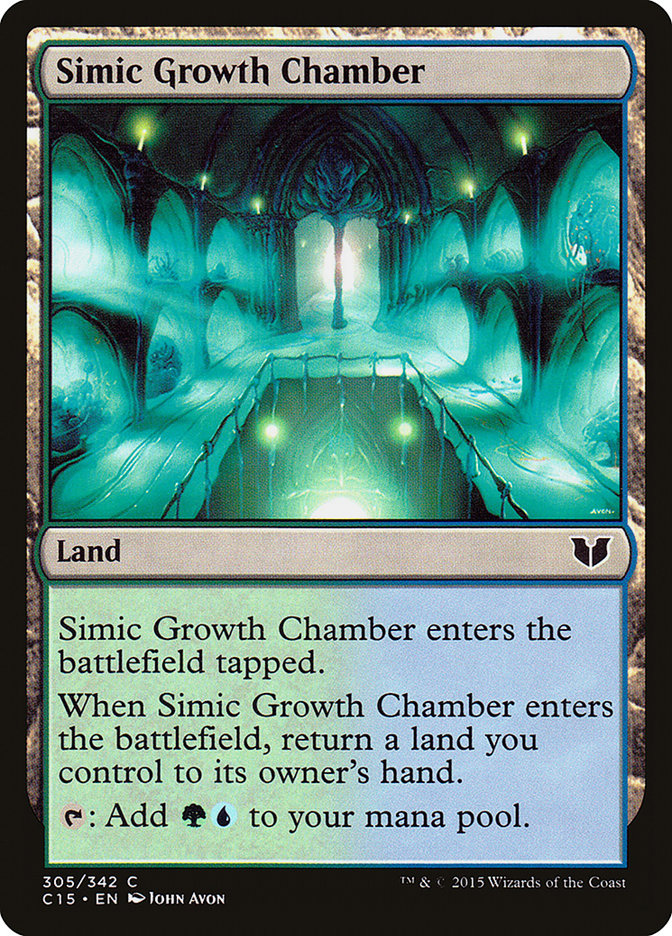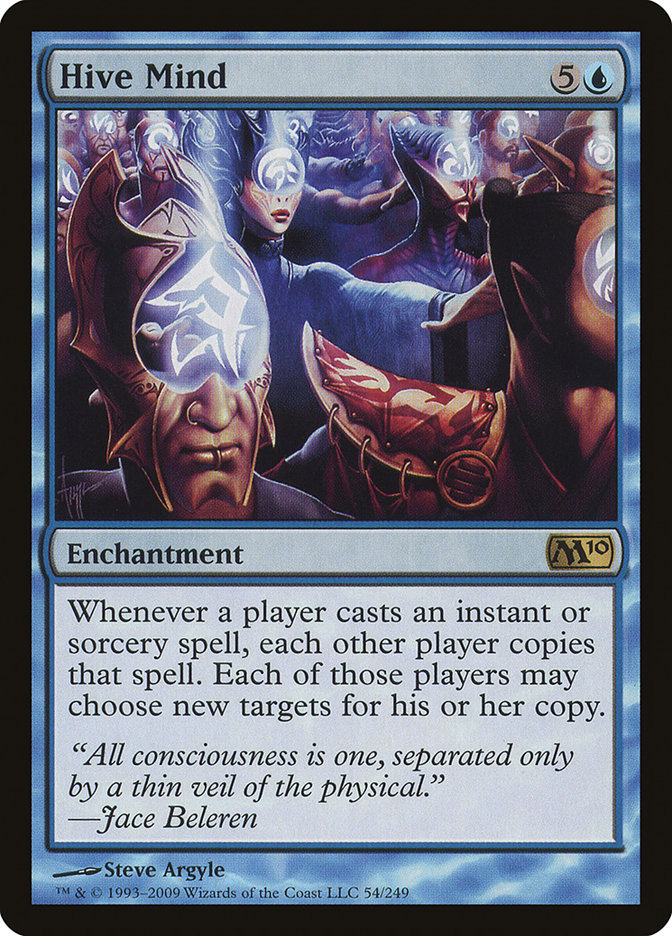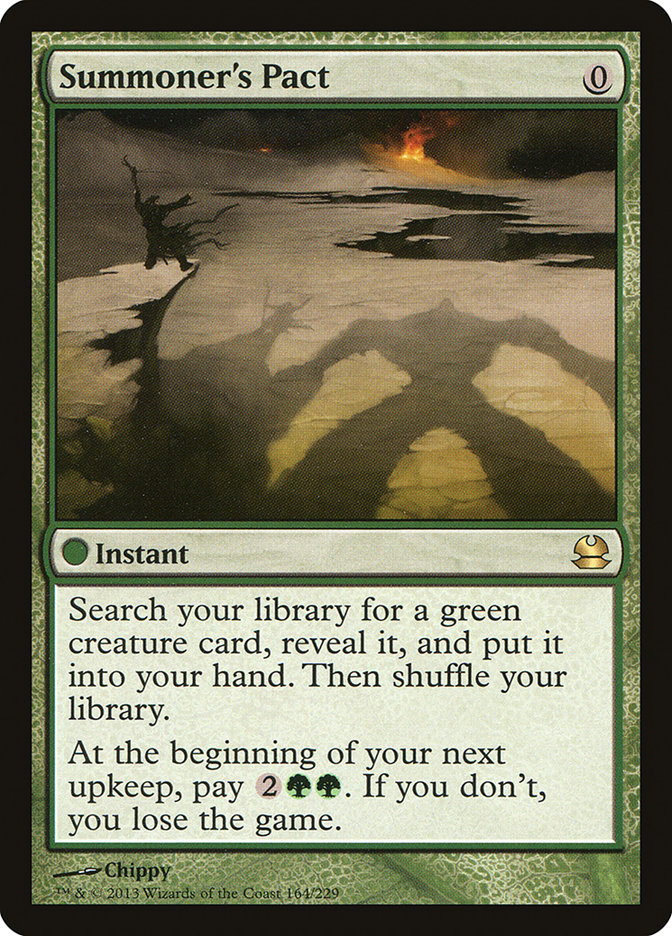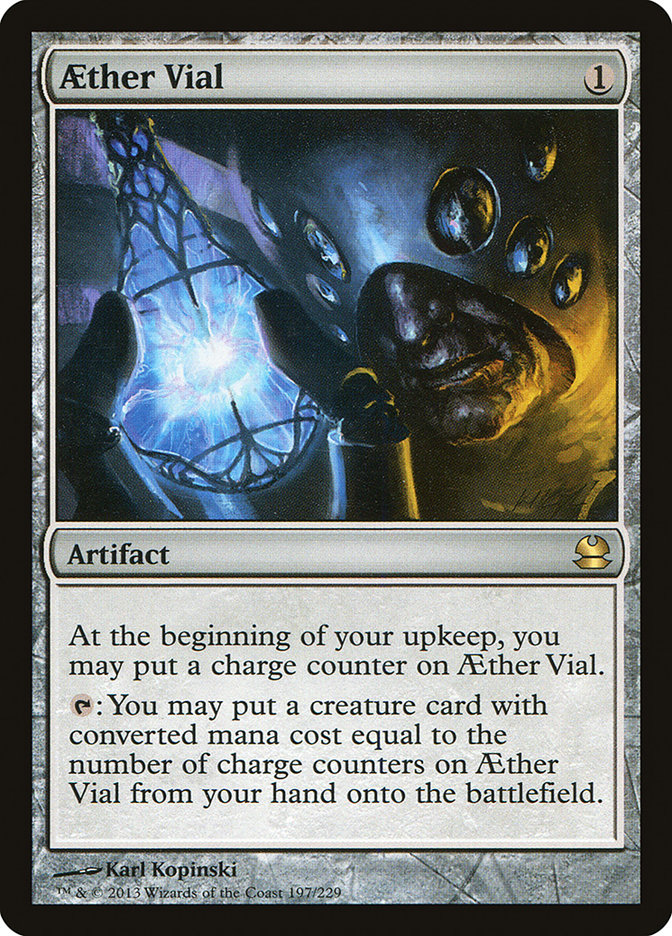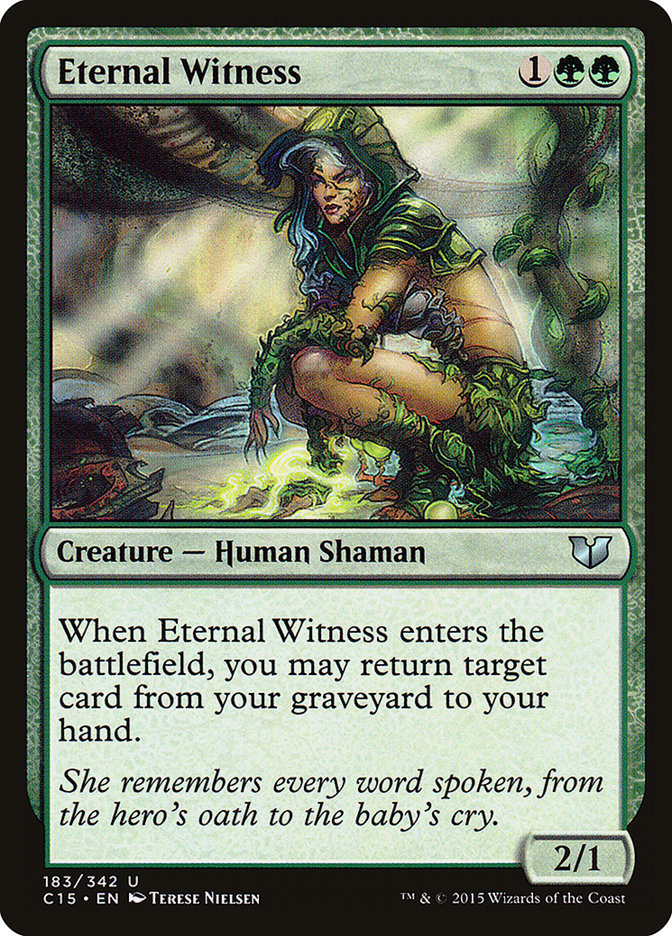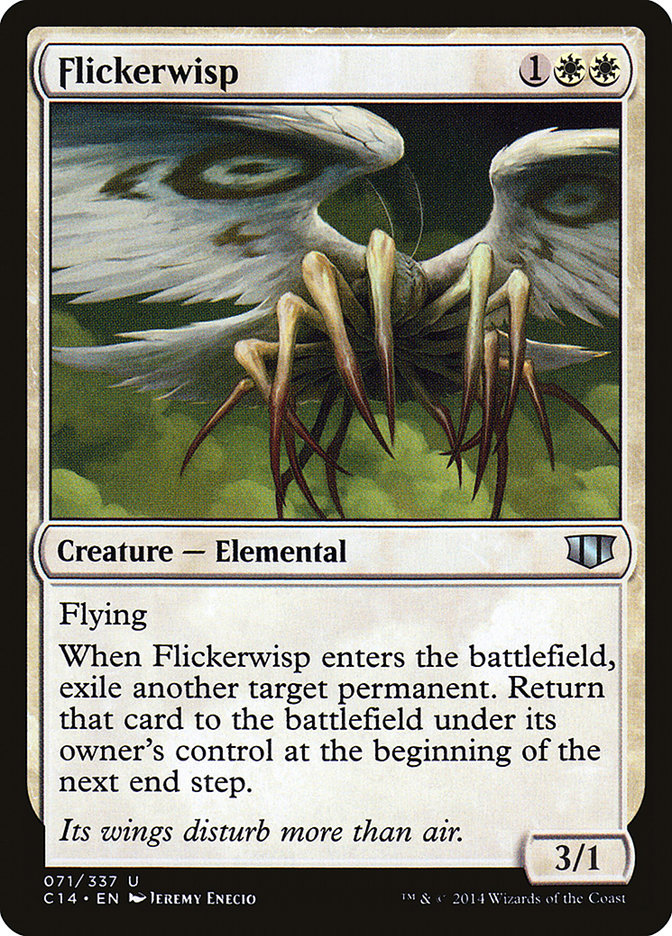Modern is a wonderful format with the ability to give old decks new life. In the past, old Standard decks have become staples of the Modern metagame. Atarka Red with Become Immense and Temur Battle Rage was a popular Standard deck during KTK/BFZ, and now we see it in Modern as Death’s Shadow Aggro. Standard decks as far back as Splinter Twin, Jund, and Delver became staple decks in the format.
Not only do Standard decks find a home powered-up in the Modern format, some decks even come back from a ban list update to see new life! Storm has had several cards banned from it, including Ponder, Preordain, Rite of Flame, and Seething Song, but still exists as a fringe deck that can sometimes do very well. Jund is another example of a deck that will not die. Bloodbraid Elf and Deathrite Shaman were both banned, but Kolaghan’s Command and Kalitas, Traitor of Ghet have breathed new life into the archetype. More recently, Bant Eldrazi remained a deck even after the banning of Eye of Ugin.
Today, I’m going to examine decks making the Modern transition through each of these lenses. The old Amulet Bloom deck is being reborn without Summer Bloom, and the Standard Bant Company archetype is making the powerful transition into Modern with a wider range of creatures and the additional enabler Aether Vial.
Creatures (13)
Lands (27)
Spells (20)

After the banning of Summer Bloom in Modern, most people put their copies of Amulet of Vigor into their trade binders or Commander decks. Undeterred, Magic Online user DAVIUSMINIMUS managed to breathe new life into the deck.
Amulet is an unconventional ramp deck that uses Ravnica bounce lands to ramp up to six mana in a single turn. Amulet of Vigor untaps bounce lands before they must be returned to your hand, and cards like Azusa, Lost but Seeking allow you to replay a bounce land and tap it for mana multiple times in a turn. The deck’s six-mana payoffs include Primeval Titan searching for Boros Garrison and Slayer’s Stronghold followed by Gruul Turf and Kessig Wolf Run, or a Hive Mind followed up by a Summoner’s Pact that the opponent can’t pay for.
Amulet is a linear combo deck that tries to race to a win before the opponent can have too much interaction. Pact of Negation can protect their Primeval Titan from an early Path to Exile or Terminate, and Hornet Queen or Engineered Explosives can slow down attacking creatures. But aside from that, the deck generally has one plan and races to complete it. It’s also very good at finding the cards it needs, given the playset of Serum Visions and Ancient Stirrings, along with copies of Tolaria West to find lands and Pacts.
Like many combo decks that operate on a different axis from most decks, many of the cards in Amulet are unique to the deck, stronger as a whole than on their own. Amulet of Vigor; Azusa, Lost but Seeking, the Ravnica bounce lands; Sakura-Tribe Scout; and Tolaria West are just some of the cards that make Amulet work. In another variation of Amulet that Matt Nass has been working on, Sakura-Tribe Scout is replaced by Journey of Discovery, a single-turn Azusa, Lost but Seeking that doesn’t die to removal.
If you decide to pick up the Amulet deck, it’s good to learn as much about the interactions as possible. Don’t be afraid to cast Summoner’s Pact to find a Primeval Titan you can cast this turn, because simply searching for two copies of Simic Growth Chamber can find you the mana you need to pay for the Pact next turn. Or, if you’re confident you can go for the win, feel free to use your Pacts without a plan to pay for them; you don’t have a “next upkeep” when you’ve already won. Utility lands like Khalni Garden and Radiant Fountain provide extra value when you pick them up with a Simic Growth Chamber and can be tutored for with Tolaria West or found with Ancient Stirrings. If you’re feeling particularly cheeky and you have no other turn 1 play, you can even name Merfolk with your Cavern of Souls on turn 1 to fake out your opponent, picking it up with a bounce land the next turn.
Amulet is a very complex deck, requiring you play with the puzzle-solving skills of a combo deck and the adaptive thinking of a toolbox deck. The turns can be busy, with dozens of triggers stacking and resolving every turn, and the exact sequencing matters. Because there are lots of lines of play to consider, be sure to practice with the deck! The combo can seem pretty straightforward, but you have to know what your opponent might have early and how to play around it.
If you meet an opponent playing this deck, try to hit its weak points. It is quite weak to Blood Moon, Ghost Quarter, and Fulminator Mage, especially now that it is a turn or two slower without Summer Bloom. If you can counter or destroy an early Amulet of Vigor, you can also put a serious kink in their plan; they either have to continue digging for another, or begin to play the bounce lands without ignoring their serious drawback. Otherwise, removing Azusa, Lost but Seeking or Sakura-Tribe Scout is a fine plan.
Creatures (28)
- 2 Eternal Witness
- 3 Meddling Mage
- 1 Flickerwisp
- 4 Noble Hierarch
- 3 Knight of the Reliquary
- 1 Spellskite
- 2 Scavenging Ooze
- 3 Phantasmal Image
- 2 Voice of Resurgence
- 4 Reflector Mage
- 3 Spell Queller
Lands (22)
Spells (10)

Bant Company is arguably the best deck in Standard, and although Collected Company is rotating out soon, it will not be forgotten. Collected Company has already made a large impression on Modern thanks to the Abzan Company combo deck, but it’s not done there. There are so many excellent creatures in the vast pool of Modern cards in bant colors that the Bant Company deck, complete with Reflector Mage and Spell Queller, is ready to make the leap to Modern.
In addition to Collected Company generating card and mana advantage, Modern Bant Company also runs Noble Hierarch and Aether Vial to gain an even larger mana advantage. By packing the deck with a large number of three-drop creatures, the Bant Company deck gets three benefits. First, it generates maximum value from Collected Company; next, it often reaches three mana on turn 2 thanks to Noble Hierarch; finally, it can leave Aether Vial on three to flash in a wide range of value creatures.
Bant Company is a fair creature deck that relies on gaining tempo on its opponents. Reflector Mage, Spell Queller, and Meddling Mage can keep the opponent on the back foot while Knight of the Reliquary beats down. Modern is a format with consistent decks full of four-ofs, where nobody has built their deck around Reflector Mage. And because it is a “turn 4” format, nearly every spell in the format outside of the R/G Tron deck can be exiled by Spell Queller, even Supreme Verdict! Meddling Mage can also reward you for knowledge of the format, coming down from a resolved Aether Vial activation naming Ad Nauseam before the opponent knows they’re being shut down, or simply naming the removal spell most likely to be its downfall.
Eternal Witness can generate a ton of value, allowing you to buy back your Collected Company, and Flickerwisp can give you an extra activation before providing the same flying clock as a flipped Delver of Secrets. Voice of Resurgence gives you a bit of resilience against control decks, and Scavenging Ooze provides lifegain and graveyard hate all in one package. Phantasmal Image rounds out the threat suite by becoming a second copy of whatever creature is best in a given situation, even your opponent’s! Alongside all the value creatures, the deck has access to Gavony Township to grow the creatures out of Lightning Bolt range and provide an incredibly quick clock.
By playing a lot of small creatures you open yourself up to much of Modern’s removal and battlefield wipes. Lightning Bolt and Anger of the Gods will kill nearly every creature in the deck, which seems like a huge tempo loss. However, since so many of the three-mana creatures came in with the help of Collected Company, Aether Vial, and Noble Hierarch, it’s actually not as much of a tempo loss as it might seem. Bant Company is also less susceptible to the newly popular Grafdigger’s Cage, as the only card it shuts down is Collected Company. By contrast, the Abzan Company deck loses utility from Collected Company, Chord of Calling, and the Kitchen Finks combo.
Much like in Standard, Bant Company is a deck that becomes more powerful in the hands of an experienced pilot. There are lots of complex lines of play and decisions to be made, so the ceiling for this deck is quite high. If you decide to jump into Modern with the deck, know that it will grow with you. Spell Queller, Reflector Mage, and Meddling Mage reward you for choosing the right targets, and Aether Vial provides a greater level of control over your sequencing.
Great Decks Never Die
When your favorite deck gets hit by a ban or rotates out of Standard, know that Modern’s huge card pool and diverse format is here waiting, ready to give you a new challenge and help you prove yourself in a new competitive metagame. Whether you’re piecing together a combination of cards that puts you in a winning position or filling a deck full of the best cards in a color combination, there’s a ton of room left for innovation in the format. I look forward to seeing what you can do with your old decks going forward, and I hope to see these and many other new decks living a new life on the SCG Tour®! Have a wonderful week, and as always: happy gaming!


